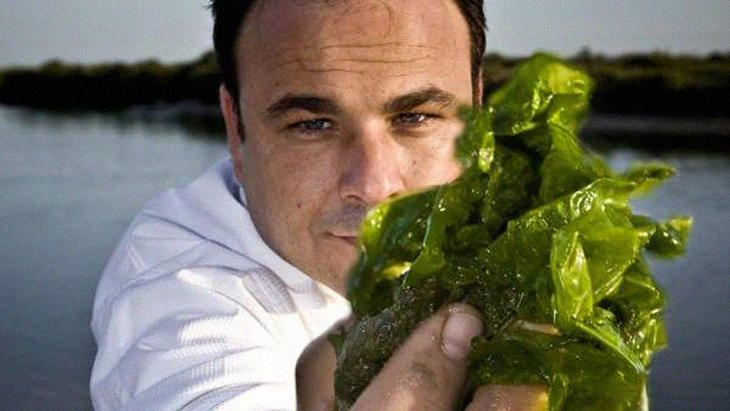3-Michelin Star Chef Discovers Sustainable Seagrass That’s Way More Nutritious Than Regular Rice

When a chef receives a Michelin star, it’s like getting an Oscar in food world. For Spanish chef Ángel León, he was going to show yet another reason why he deserves every Michelin star that he’s ever received.
The Spanish chef has actually discovered that sea grass, which most people don’t really appreciate considering there is so much other colorful corals and sea life to look at, can in fact, produce its own kind of “rice.”
Like a number of environmentalists but unlike other chefs, León is determined to help save the planet in his own way. He’s managed to turn this grain into an edible substance while using it as a way to repair sea grass ecosystems all over the world. In this way, he can help stop the global warming while helping feed it as well.
León is incredibly famous when it comes to creating highly innovative seafood dishes. In fact, his restaurant, Aponiente, explains from the get go that it’s the ‘Cuisine of the sea.’ He’s become famous for his knowledge and love of the sea, alongside his incredible gastronomical meals that have garnered him three Michelin stars. This is also what has made him famous, not just in Spain, but really all over the globe.
In fact, when he started his restaurant, he explained to The Guardian, “When I started Aponiente 12 years ago, my goal was to open a restaurant that served everything that has no value in the sea. The first years were awful because nobody understood why I was serving customers produce that nobody wanted.”
The chef lives by the Bay of Cádiz, which has always brought in loads of sea grass to the shore, specifically eelgrass. Ironically, as León’s career rose to stardom, the eelgrass lining the shore of the bay he grew up by has been in a major decline, alongside the decline of sea grass habitats all across the oceans due to a number of reasons, including human activity and the warming of the oceans.
With León’s new seagrass rice discovery, which has been noted by the Guardian as ‘only the second documented cases of eating sea grass grains,’ the chef is hopeful that it can help change the way people look at their shorelines. Instead of noticing pesky green stuff they see floating in the water, he hopes that they can look at it as delightful “marine gardens” that can be used to help fight global warming.
A Superhero Chef With a Superfood
When broken down, sea grass is actually one of the most amazing elements from the sea. It’s actually an essential absorbent of carbon, managing to capture carbon 32 times quicker than the rainforest, while building and enriching habitats too. The fact that it could soon become known as a superfood grain as well will also help encourage people to restore sea grass meadows in the water all over the globe.
According to León, it truly is a superfood. It was in the beginning of 2017 when, along with the University of Cádiz, he began conducting tests on the small green grains of “sea rice” which he noticed coming out from the sea grass. The research group found that not only was it gluten-free, but it also contains 50% more protein than regular rice. It also has loads of omega-6 and omega-9 fatty acids.

From their research, it led them to do a pilot study on eelgrass cultivation as a crop, making three different plots of the sea grass that totaled a little less than an acre of salt marsh in size.
When the plants finally bore grains, 18 months later, the chef realized that he hadn’t even tried them. He wasn’t sure if they were even good or whether they were going to taste awful. But considering he was best known for his successful culinary creations, he managed to integrate it into his food, and in a number of different ways too.
León shared, “It’s interesting. When you eat it with the husk, similar to brown rice, it has a hint of the sea at the end. But without the husk, you don’t taste the sea.”
With his discovery, the chef hopes that because of its success as a rice, the fact that it’s made without pesticides and fertilizer during its growth, and it’s high nutritional value and quality despite yielding less crop than usual rice does, will make other countries and organizations choose to grow it as well, and on a massive scale at that. Plus when they do, it was cause a regeneration of ocean ecosystems that will not only capture unwanted and unhealthy carbon, but it will help feed the world as well.
The chef’s website explains, “We have challenged ourselves to create the world’s first and only specialized R&D center for the cultivation of marine vegetation.”
It adds, “The goal is to continue researching this marine grain, as it may hold the key to mitigating the effects of climate change. We also aim to restore aquatic ecosystems, develop future marine crops that until now have been cultivated only on land, and work toward making the ‘ocean garden’ a reality.”



